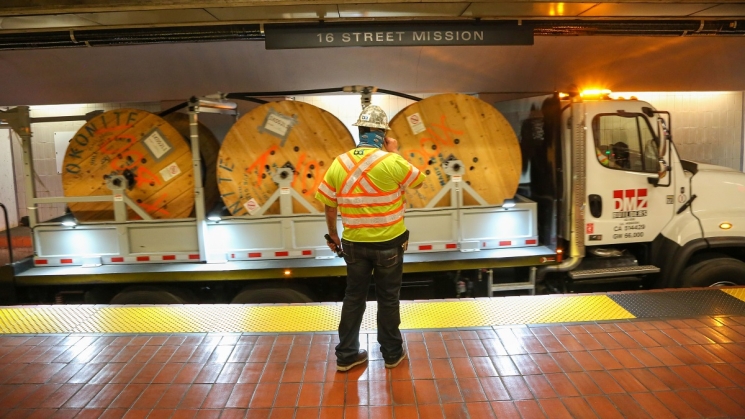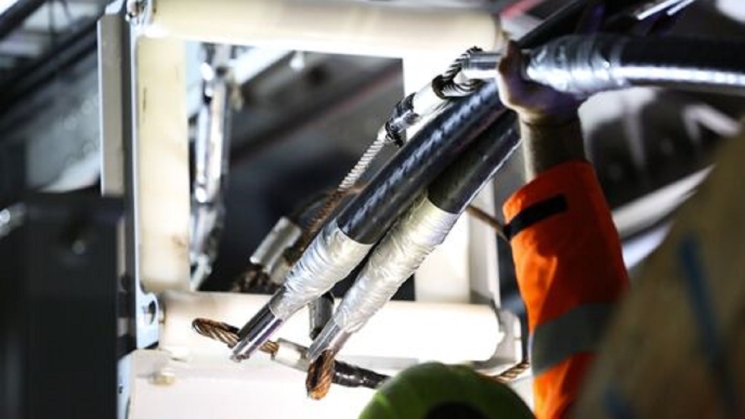
Sunday single-tracking in San Francisco
A cable rail truck with 3,000 feet of cable being transported. Photo courtesy of BART staff.
BART crews continue their work replacing aging power cables in San Francisco causing single tracking and reduced service on select Sundays.
Upcoming single-track Sundays include:
On these Sunday single-tracking days:
Project background
Installation of modern and robust high-voltage cable is critical to reliably run trains. When it’s all done, BART riders can expect a more resilient electrical power system to handle more frequent trains and support the growing number of Fleet of the Future trains.

The operation involves pulling three large cables through a conduit using a mechanical cable puller, part of an upgrade funded by the Measure RR bond that voters approved in 2016. The existing electrical system is from when BART was built in the 1960s.
The first task in a cable replacement project is to install new 6-inch phenolic (a thermosetting resin) conduits. These conduits are attached to the ceiling of the tunnels using high grade structural steel plates and clamps.
BART is using a new type of conduit that is lightweight, strong and durable. Benefits to these new types of conduit include less time to install, lower maintenance cost and longer service life. The second task is to insert a steel braided line into the entire length of conduit, ensuring the conduit is clear of obstructions and ready for the cable pull.

As soon as the steel braided line is pulled through the entire conduit, one end is attached to the electrical cables and the other end is connected to the mechanical cable puller.
Now the cable pulling operation can begin. The seafoam green mechanical cable puller slowly pulls the cable into the lubricated conduit. It measures pulling tension every second to ensure no damage to the cable or conduit. It takes about one hour for the cable to travel through the entire length of the conduit. As the cable snakes along, workers listen for the sounds of its progress through the conduit.
Once the cable reaches the mechanical cable puller end, all the cable is inside the conduit and the cable pull is accomplished. It may sound simple, but the workers face challenging conditions in the dark, cramped underground space. Large fans blow fresh air – required for workers to safely breathe – into the tunnel.
For more information about the cable pulling operation, click here.





